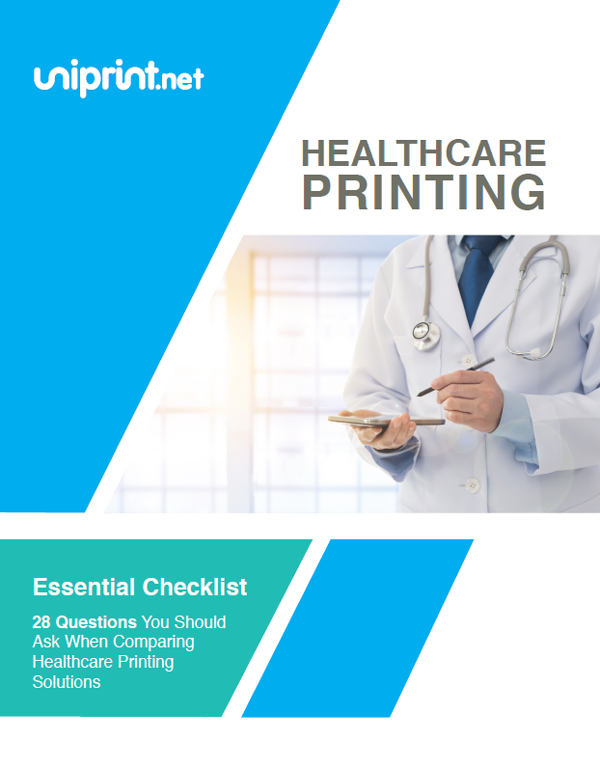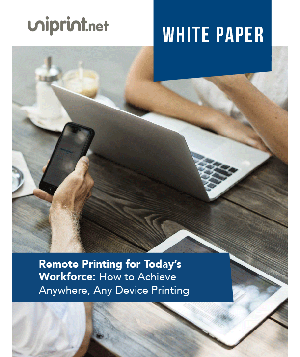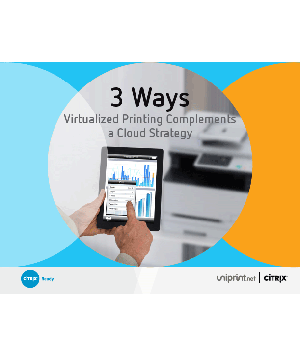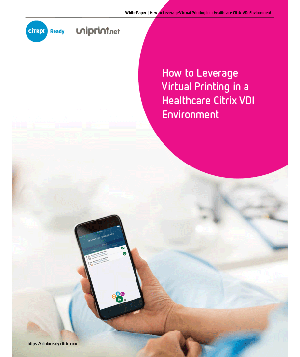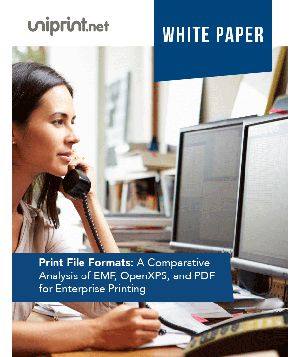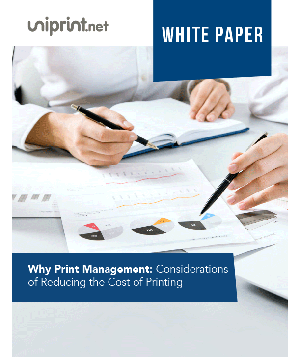The Benefits of Printing Virtualization in Enterprise Environments
Even though organizations are addressing many of the challenges associated with supporting the BYOD trend, when it comes to mobile printing, many still have their work cut out for them. Particularly in the health care industry, the proliferation of the use of mobile tablets has become a true game changer for how those in the medical profession conduct business and, more specifically, how they print sensitive and confidential data. Health care facilities are especially susceptible to printing issues given the complex IT environments, number of printers, types of activities requiring print runs and the work styles of health care staff members.
Part of the mobile printing problem is that many BYOD devices are not designed with printing in mind. Yet the numbers of health care professionals using iPads and other tablets to store patient information, manage schedules, and track patient progress will only increase as clinical personnel continue to move around the workplace, accessing the data and applications they need from multiple devices. They may work on a laptop while recording patient symptoms, but use a tablet for quick access to patient information and for keeping notes while conducting their rounds. Critically imperative within health care facilities is the ability to print this information despite the location, printer or device the staff is using. That’s where printing virtualization steps in.
In virtual desktop infrastructure (VDI) environments, the desktop’s operating system is hosted within a virtual machine that runs on a centralized server, delivering numerous benefits to organizations. Since everything resides within the data center, hardware costs are easier to manage and there are fewer upgrades to be made to a large numbers of PCs. Given the advantages and the fact that many health care organizations already employ VDI within their IT environments, it makes sense for them to extend these benefits to their printing environments.
VDI allows organizations to centralize control over desktop deployment and minimize administration costs while allowing users full access to their desktop applications. To extend these benefits to printing, IT administrators need only install one printer driver (regardless of make or model) and can dispense with the practice of installing multiple printer drivers on each virtual desktop.
Printing virtualization can also help with end-to-end document security when printing sensitive and confidential data in health care organizations such as hospitals. In the past, some organizations have attempted to provide each user with a printer in an effort to minimize security breaches that can happen if the wrong person picks up a print job. But this solution is impractical in large institutions because costs escalate quickly. IT administrators would still face printer-driver incompatibility issues and employees would still be unable to print, given their mobile work styles.
With printing virtualization, health care organizations can deploy a secure, “follow me” IT model, also known as secure pull printing, which would enable data access and printing anytime, anywhere and from any device. Secure pull printing is an ideal mitigation strategy for organizations to employ, as it ensures that documents are only released upon user authentication. This way, the document will not be released until the user requesting the information is present at the printer, providing an extra layer of security while printing. Secure pull printing also reduces waste by eliminating unclaimed documents from ever being printed in the first place.
Moving into 2014, it will only become increasingly important for IT departments, particularly within health care, to implement a delivery plan for IT services that adapts to the changing needs of users. Ideally, their strategy should focus on which IT services users need to stay productive – such as printing – as they move from place to place providing clinical care. Printing virtualization both adapts to mobile work styles and streamlines productivity while also offering health care professionals the time-saving benefits, convenience and security they yearn for.



